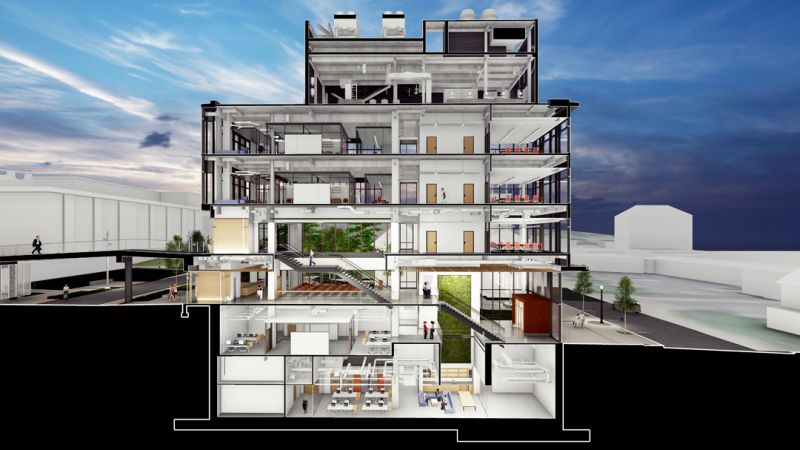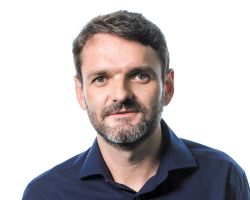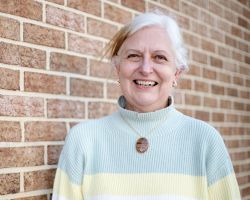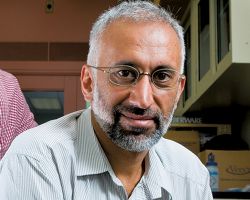The Health, Science and Technology building, slated to open next year, is being heralded as a revolutionary space for interdisciplinary research, where thinkers with different perspectives can join forces to address important questions.
The facility, also home to Lehigh's College of Health, has open-concept labs, transparent walls, staggered staircases, integrated workspaces and a community forum, laid out in a way that prompts unexpected meetings among students and colleagues.


Steven McIntosh, Chemical and Biomolecular Engineering
McIntosh and colleagues are already collaborating on a new project: artificial meat. Combining their specialties of antibiotic resistance, biomaterials, scaffold microstructures and energy, they are working out how to grow muscle tissue in the lab. If it works and catches on, it could alleviate environmental hazards. “Fertilizer is a highly chemical substance. It goes into crops, which go into animal feed. It’s a highly inefficient process. So let’s skip all of that. Don’t grow the crop. Don’t bother feeding an animal. If you want to eat meat, grow the meat.”
“The most innovative interdisciplinary research ideas come from sticky collisions,” says professor Steven McIntosh, chair of the Department of Chemical and Biomolecular Engineering. "They come from striking up conversation next to someone new while you’re getting coffee. The HST building is designed extremely well to have those collisions. ... You have to move around.”
We asked some of the faculty who will be working in HST about the discoveries and collaborations that the space might make possible.

Elsa Reichmanis, Chemical Engineering
A pioneer in microlithography, Reichmanis continually imagines new forms of advanced materials—like organic material that supports electrical current. One “cool” application, she says, would be in a biomedical device that supports electronic signaling mechanisms in the nervous system, allowing people with nerve damage to function in new ways. “That’s not something I could do from a purely materials or device standpoint—I’m not a biologist or in the bio sector—but a team of people might be able to have an impact. … The more conversations we have, the more stuff gets started.”

Anand Jagota, Bioengineering
Understanding how a snail holds onto a wall has helped Jagota uncover ways a tire can better grip a road, and how to make glue that releases on command. Now, he’s looking at how viruses stick to cells. Or, more importantly, how to keep viruses from adhering, to prevent infection. The work bridges health, computational methods, bioengineering and more. “We need to be constantly talking to each other. We’ll be much more prolific in generating science and proposals and ideas if we keep seeing each other on a day-to-day basis.”
Read the full story in the Lehigh University News Center.
Story by Janet Norwood
